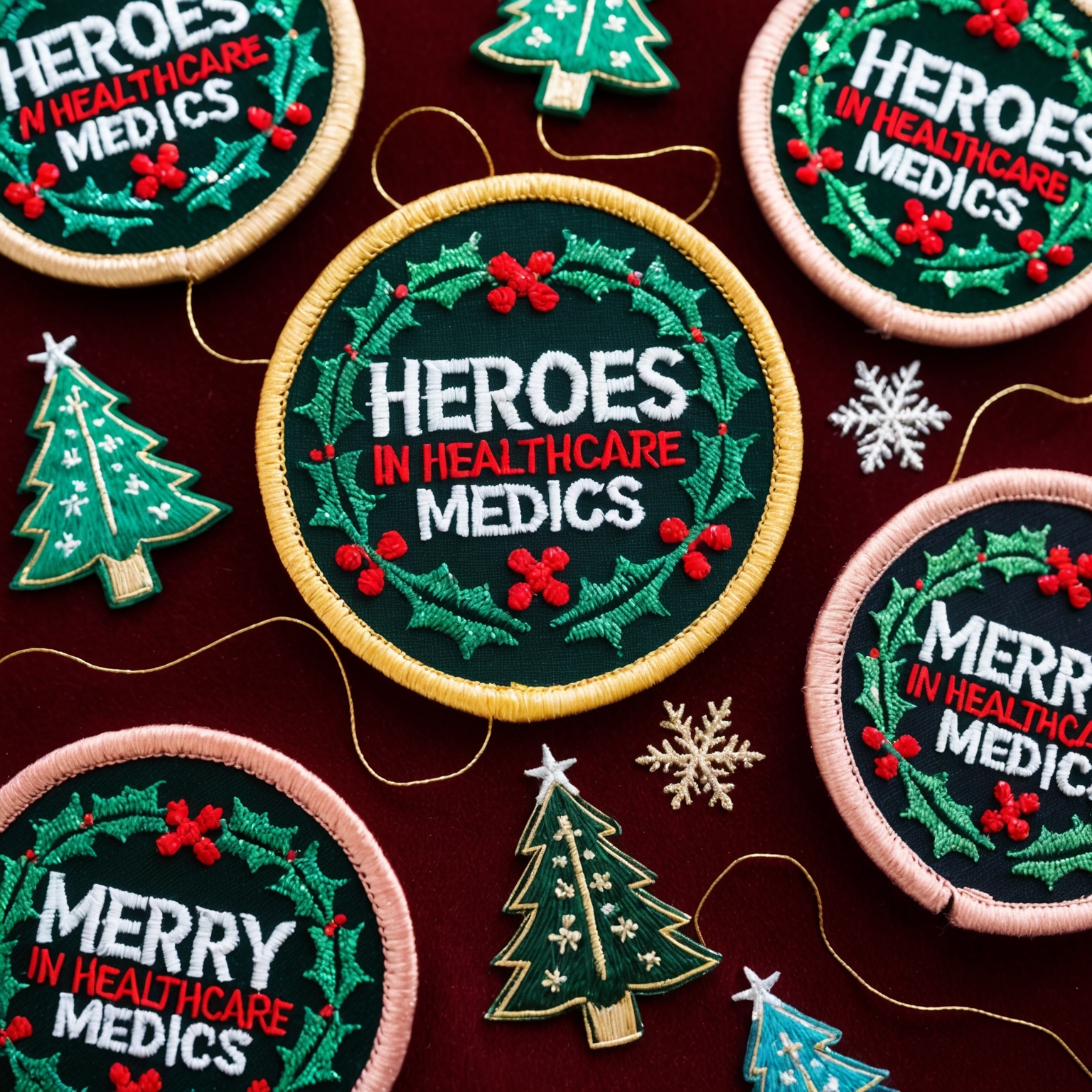Creativity is a fundamental aspect of growth and learning, especially in the world of scouting. Scouts are encouraged to explore new ideas, think outside the box, and express themselves through various activities. One exciting way to foster this creativity is through patch design competitions. These competitions not only allow scouts to showcase their artistic talents but also engage them in the process of creating something meaningful that represents their experiences, values, and achievements.
Patch design competitions for scouts can be a thrilling and rewarding experience, bringing together the entire troop or community in a fun and collaborative way. These competitions inspire scouts to take pride in their designs, offer opportunities for leadership and teamwork, and result in unique, custom patches that can be worn and cherished for years to come. In this article, we will explore how to organize a successful patch design competition for scouts, providing tips, guidelines, and creative ideas to ensure that the event is both enjoyable and impactful.
The Importance of Patch Design Competitions in Scouting
Encouraging Creativity and Self-Expression
Patch design competitions offer scouts a unique opportunity to express themselves creatively. Whether they are drawing from their personal experiences in scouting, incorporating elements of nature, or experimenting with abstract designs, these competitions allow scouts to explore their artistic side and bring their ideas to life.
The process of designing a patch requires scouts to think critically about what they want to convey through their design. They must consider elements such as color, symbolism, and composition, all while ensuring that their design is meaningful and representative of the theme or event it is meant to celebrate. This creative exercise helps scouts develop their problem-solving skills and encourages them to take risks and try new things.
Building Teamwork and Collaboration
While patch design competitions can be individual or group-based, they often involve a collaborative element that brings scouts together to share ideas, provide feedback, and work towards a common goal. Group-based competitions, in particular, require scouts to communicate effectively, listen to one another, and combine their strengths to create a design that everyone can be proud of.
Even in individual competitions, the process of sharing designs and receiving feedback from peers fosters a sense of camaraderie and mutual support. Scouts learn to appreciate different perspectives and styles, which can enhance their understanding of teamwork and collaboration.
Celebrating Achievement and Pride
The patches created through these competitions are not just artistic expressions; they are symbols of achievement, pride, and identity. When scouts see their designs turned into real patches that can be worn on uniforms, jackets, or backpacks, they experience a sense of accomplishment and pride in their work.
These patches also serve as lasting reminders of the event or theme they were created to represent. Whether it’s a camporee, a special project, or a troop anniversary, the patches become part of the scout’s personal collection, each one telling a unique story of creativity and success.
Steps to Organize a Thrilling Patch Design Competition for Scouts
1. Define the Purpose and Theme of the Competition
Why It Matters
Before launching the patch design competition, it’s essential to clearly define the purpose and theme of the event. The theme will guide the scouts in their designs, ensuring that the final patches are meaningful and relevant to the event or achievement being celebrated.
Implementation Ideas
- Choose a Relevant Theme: The theme of the competition should align with the scouting program’s goals, values, or upcoming events. For example, if the troop is preparing for a camping trip, the theme could revolve around outdoor adventure, nature, or wilderness survival. If the competition is tied to a special occasion, such as a troop anniversary or a service project, the theme could reflect the significance of that event.
- Involve Scouts in Theme Selection: Consider involving the scouts in the process of selecting the theme. This can be done through a group discussion or a vote, giving the scouts a sense of ownership over the competition. When scouts feel connected to the theme, they are more likely to be motivated and engaged in the design process.
- Provide Clear Guidelines: Once the theme is selected, provide clear guidelines for the competition. Explain what the theme represents and how it should be reflected in the patch designs. This will help scouts stay focused and ensure that their designs align with the competition’s objectives.
2. Set Clear Rules and Criteria
Why It Matters
Establishing clear rules and criteria for the patch design competition is crucial for ensuring fairness and consistency. Scouts need to understand what is expected of them and how their designs will be judged.
Implementation Ideas
- Determine Eligibility: Decide who is eligible to participate in the competition. Will it be open to all scouts in the troop, or will there be age-specific categories? Consider creating different categories for different age groups to ensure that all scouts have a fair chance to compete.
- Establish Design Guidelines: Provide specific guidelines for the patch designs, including size, shape, color limitations, and any required elements (such as the troop number or event date). These guidelines help ensure that the designs can be easily translated into actual patches.
- Set Submission Deadlines: Clearly communicate the deadline for submitting designs. Scouts should have enough time to develop their ideas, but it’s also important to keep the competition moving forward. Consider setting a deadline that aligns with the timeline for producing the patches in time for the event or occasion.
- Define Judging Criteria: Outline the criteria that will be used to judge the designs. Common criteria might include creativity, originality, relevance to the theme, and overall aesthetic appeal. Sharing the judging criteria with the scouts in advance helps them understand what is important in their designs and allows them to focus on those aspects.
3. Provide Resources and Support
Why It Matters
Supporting scouts throughout the design process ensures that they have the tools and confidence they need to create their best work. Providing resources, such as design materials and guidance, helps level the playing field and encourages all scouts to participate, regardless of their artistic abilities.
Implementation Ideas
- Offer Design Workshops: Consider hosting a design workshop or instructional session where scouts can learn basic design principles, such as color theory, composition, and symbolism. This workshop can also cover practical skills, such as how to sketch designs or use digital design tools.
- Provide Design Materials: Make sure that scouts have access to the materials they need to create their designs. This might include paper, pencils, markers, or even digital design software. Encourage scouts to experiment with different mediums and techniques to find what works best for them.
- Create a Supportive Environment: Foster a positive and supportive atmosphere where scouts feel comfortable sharing their ideas and asking for help. Encourage leaders and older scouts to offer constructive feedback and guidance to younger participants, helping them develop their skills and confidence.
4. Organize the Submission and Judging Process
Why It Matters
A well-organized submission and judging process is essential for ensuring that the competition runs smoothly and fairly. This process should be transparent and clearly communicated to all participants, helping to maintain trust and enthusiasm for the competition.
Implementation Ideas
- Collect Submissions: Determine how scouts will submit their designs, whether it’s through physical submissions (such as handing in paper sketches) or digital submissions (such as uploading files to a shared platform). Make sure the submission process is easy to follow and accessible to all participants.
- Form a Judging Panel: Assemble a panel of judges who will evaluate the designs based on the established criteria. The judging panel could include troop leaders, parents, or even guest judges with design experience. Consider including a mix of perspectives to ensure a well-rounded evaluation of the designs.
- Anonymous Judging: To ensure fairness, consider implementing an anonymous judging process where the scouts’ names are not associated with their designs during the judging phase. This allows the judges to focus solely on the quality of the designs without any bias.
- Announce the Winners: Once the judging process is complete, announce the winners in a special ceremony or during a troop meeting. Celebrate the accomplishments of all participants and recognize the effort and creativity that went into each design. This helps to maintain a positive atmosphere and encourages continued participation in future competitions.
5. Produce and Distribute the Winning Patches
Why It Matters
The final step in the competition is turning the winning designs into actual patches that can be worn and displayed with pride. This step is crucial for bringing the competition full circle and giving scouts a tangible reward for their creativity and hard work.
Implementation Ideas
- Choose a Patch Manufacturer: Select a reputable patch manufacturer who can produce high-quality custom patches based on the winning designs. Provide the manufacturer with detailed specifications, including the size, shape, colors, and any special features (such as embroidery techniques or textures) that were included in the designs.
- Coordinate the Production Timeline: Work with the manufacturer to establish a production timeline that ensures the patches will be ready in time for the event or occasion they are meant to celebrate. Keep the scouts informed about the timeline so they know when to expect their patches.
- Distribute the Patches: Organize a special patch distribution ceremony where the winning patches are awarded to the scouts. This could take place during a troop meeting, at the event being celebrated, or at a special awards night. Make the distribution a memorable experience, emphasizing the significance of the patches and the creativity behind their designs.
6. Celebrate Participation and Encourage Future Competitions
Why It Matters
While it’s important to recognize the winners of the competition, it’s equally important to celebrate the participation and creativity of all scouts who took part. Encouraging future competitions helps to keep the creative spirit alive within the troop and provides opportunities for more scouts to showcase their talents.
Implementation Ideas
- Award Participation Patches: Consider creating a special participation patch that can be awarded to all scouts who entered the competition, regardless of whether their design was selected as the winner. This patch serves as a token of appreciation for their effort and creativity, encouraging them to continue participating in future competitions.
- Showcase All Designs: Find a way to showcase all of the submitted designs, such as creating a display board, a digital slideshow, or a gallery on the troop’s website or social media page. This allows all scouts to see their work recognized and appreciated by their peers, leaders, and the wider community.
- Plan Future Competitions: Build on the success of the current competition by planning future patch design competitions. Consider rotating themes, introducing new challenges, or expanding the competition to include scouts from other troops or regions. Regular competitions provide ongoing opportunities for scouts to develop their creative skills and contribute to the troop’s identity and spirit.
Creative Ideas for Patch Design Competitions
1. Troop Anniversary Patch
Celebrate a troop’s anniversary with a special patch design competition. The theme could revolve around the troop’s history, values, or notable achievements. Scouts can incorporate elements that reflect the troop’s identity, such as the troop number, founding year, or a mascot.
2. Event-Specific Patch
Host a patch design competition for a specific scouting event, such as a camporee, jamboree, or service project. The designs could reflect the theme or activities of the event, making the patch a unique and meaningful memento for all participants.
3. Eco-Friendly Patch
Encourage environmental awareness with an eco-friendly patch design competition. The theme could focus on conservation, sustainability, or nature appreciation. Scouts could incorporate symbols of the natural world, such as trees, animals, or recycling symbols, into their designs.
4. Scout Values Patch
Challenge scouts to design a patch that represents one of the core values of scouting, such as trustworthiness, loyalty, or kindness. This competition allows scouts to reflect on the importance of these values and express them through their artwork.
5. Achievement Patch
Create a competition where scouts design patches that represent specific achievements, such as earning a merit badge, completing a hike, or reaching a service milestone. The winning designs could be turned into patches that are awarded to scouts who accomplish these goals in the future.
6. Collaborative Group Patch
Organize a group-based patch design competition where patrols or small teams work together to create a patch. The design process encourages collaboration and teamwork, and the final patch could represent the group’s shared experiences or accomplishments.
The Impact of Patch Design Competitions on Scout Development
Building Confidence and Self-Esteem
Participating in a patch design competition can be a significant confidence booster for scouts. The process of creating a design, submitting it for evaluation, and seeing it turned into a real patch reinforces their creative abilities and shows them that their ideas have value. Winning a competition or even just receiving positive feedback from peers and leaders can greatly enhance a scout’s self-esteem, encouraging them to continue exploring their creativity.
Fostering a Sense of Belonging and Pride
Patch design competitions also contribute to a scout’s sense of belonging within their troop. When scouts see their designs worn by others or displayed as part of the troop’s identity, they feel a strong connection to the group and pride in their contributions. This sense of ownership and pride helps to strengthen the bonds within the troop, creating a more cohesive and supportive community.
Encouraging Lifelong Learning and Creativity
Engaging scouts in creative activities like patch design competitions fosters a love for learning and creativity that can last a lifetime. The skills they develop—such as design thinking, problem-solving, and collaboration—are transferable to many areas of life. By encouraging scouts to think creatively and express themselves through art, these competitions help to cultivate well-rounded individuals who are prepared to tackle challenges with innovation and confidence.
How to Organize Thrilling Patch Design Competitions for Scouts
Patch design competitions offer a dynamic and engaging way to ignite creativity among scouts. By organizing these competitions with clear guidelines, supportive resources, and a focus on celebrating all participants, troop leaders can create a memorable experience that fosters creativity, teamwork, and pride.
As you plan your next patch design competition, remember that the goal is not just to produce beautiful patches but to inspire and empower scouts to express themselves, work together, and take pride in their achievements. By leveraging the power of these creative competitions, you can help scouts develop the skills and confidence they need to succeed in all areas of life, while also creating lasting symbols of their scouting journey.
If you are interested in purchasing high-quality custom patches, feel free to call us at 1-866-903-4903 or fill out one of our FREE quotes here.




